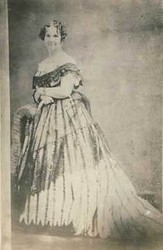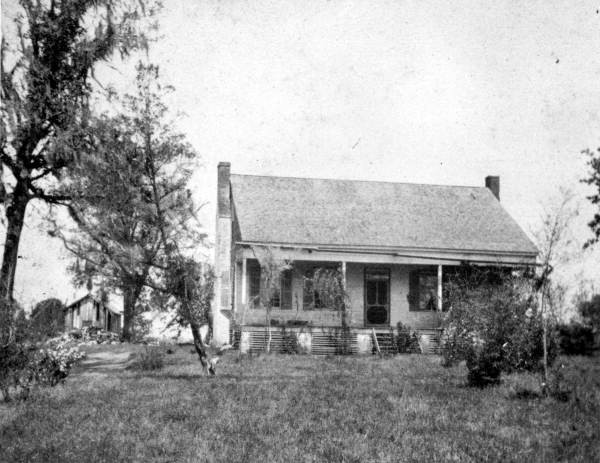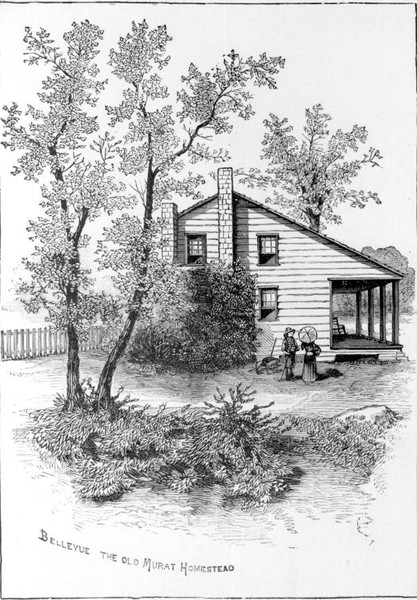Belle Vue
Introduction
Text-to-speech Audio
This was the site of Bellevue Plantation which was purchased by Catherine Willis Gray Murat in 1854. Murat was the great-grandniece of George Washington after her second husband, Prince Achille Murat died in 1847. The plantation was named after the Hotel de Belle-Vue in Brussels, where Catherine and Achille had lived while in Europe. It was a modest Florida plantation home of the era and was the centerpiece of the farm. The home was built in the Greek Revival style and had two stories, with a portico on the front. The house was furnished with period furniture and contained a number of paintings and sculptures. In 1860, there were 25 enslaved people living at Bellevue Plantation. They worked in the cotton fields, provided skilled labor, and tended to the cooking. Catherine Murat was a popular figure in Tallahassee society and was known for her hospitality. She hosted a number of parties and events at Bellevue Plantation. She was also involved in a number of charitable organizations, including the Mount Vernon Ladies Association.
Images
Princess Catherine Daingerfield Willis Gray Murat

Bellevue Around 1900

Sketch of Bellevue

Backstory and Context
Text-to-speech Audio
By 1854, Kate had paid off the debts Achille had left her, thanks to her gift from Napoleon III, and she was able to purchase a 500-acre plantation, along with the house on the property. She named the house and plantation Belle Vue, reportedly for a hotel In Belgium she had stayed at with her husband while they toured Europe 20 years prior. Another possibility is that, situated on top of a hill overlooking Tallahassee 2 miles to the east, the home had a beautiful view of either of its porches.
Built in a vernacular style, the design it followed was common among Florida plantations. Made for keeping cool and catching every breeze possible, Belle Vue features a central hall, with the front and back doors aligned to allow maximum airflow, high ceilings to give the heat somewhere to go, and plenty of windows.
It was here that Catherine most often entertained after she bought it, rather than econ chatty, as the winter is far busier in Tallahassee than the summer owing to the climate. Her gatherings were popular, and she made sure, despite the rustic, simple design of her home, to display her finest French pieces. This included furniture, tableware, décor, and even the clothes her enslaved workers wore while serving the party. Along with her official title, she had also been permitted to utilize the royal livery often required the enslaved servants to wear red velvet when she entertained.
It was during her time at Belle Vue that Kate found her passion for preservation and joined the Mount Vernon Ladies Association. When it came time to choose a Vice-Regent for the state, Ellen Call Long was first nominated. She declined in favor of Catherine, owing in part to Catherine's family connection to George Washington and her philanthropic spirit.
Despite the protests of another vice Regent, on account of Kate’s connections to Napoleon, she was declared by Pamela Ann Cunningham to be a "thorough patriot" and accepted as Vice-Regent for Florida in 1858. This position put her in charge of the state’s agents who collected funds for the purchase, restoration, and preservation of Mount Vernon, George Washington's plantation home in Virginia.
Even with war looming and a significantly smaller population, Catherine sent Cunningham a total of $3791, the most per capita of any participating state. Divided up, each citizen of Florida gave about $0.03 to the Mount Vernon ladies association. When the Civil War broke out, Catherine used her home to sew and knit uniforms and socks for the Confederate soldiers that Florida could send from her scant population. She is said to have provided food from her own stores and even cooked breakfast herself for those soldiers convalesced in the hospital in Tallahassee. The defeat of the Confederacy, combined with the war, led to the decline of the family fortune.
When emancipation came to Tallahassee in May of 1865, many of the formerly enslaved workers remained, either by choice or a lack of choices. A friend of the princess' shares that on Christmas, Catherine's plantation workers presented her with products they had grown or produced on the land in an attempt to help her. The veracity of the descriptions of enslaved and formerly enslaved workers and their loyalty and devotion to their enslaver are a product of their time. Surviving accounts emphasize that she was "a kind master," but these accounts come from the perspectives of those who enslaved other humans. Many of the accounts of formerly enslaved persons were recorded for and by white people, so sources that emphasize Murat's kindness towards those she enslaved should be placed into historical context.
Patsy Lee would live out her days at the foot of the hill that Bellevue stood on. Upon the death of the Princess, she received 20 acres, a cabin, and $100.
Sources
Boyle, Hallie. “Socks and Cannons and Princess Murat.” The Tallahassee Democrat, August 6, 1967.
Fischer, Henry. “Kate, Murat’s Pretty Bride.” The Cincinnati Enquirer, March 10, 1895
Lanier, Sidney. Florida: Its Scenery, Climate, and History. Philadelphia, PA: J.B. Lippencott & Co., 1876.
McRory, Mary Oakley, and Edith Clarke Barrows. The History of Jefferson County. The Digital History Project. Monticello, FL: Kiwanis Club Monticello, 1985. http://digitalhistoryproject.pbworks.com/w/browse/#view=ViewFolder¶m=E-book%3A%20The%20History%20of%20Jefferson%20County.
Hanna, A. J. A Prince In Their Midst: The Adventurous Life of Achille Murat on the American Frontier. Norman, OK: University of Oklahoma Press, 1946.
Florida Memory
Florida Memory
Florida Memory
